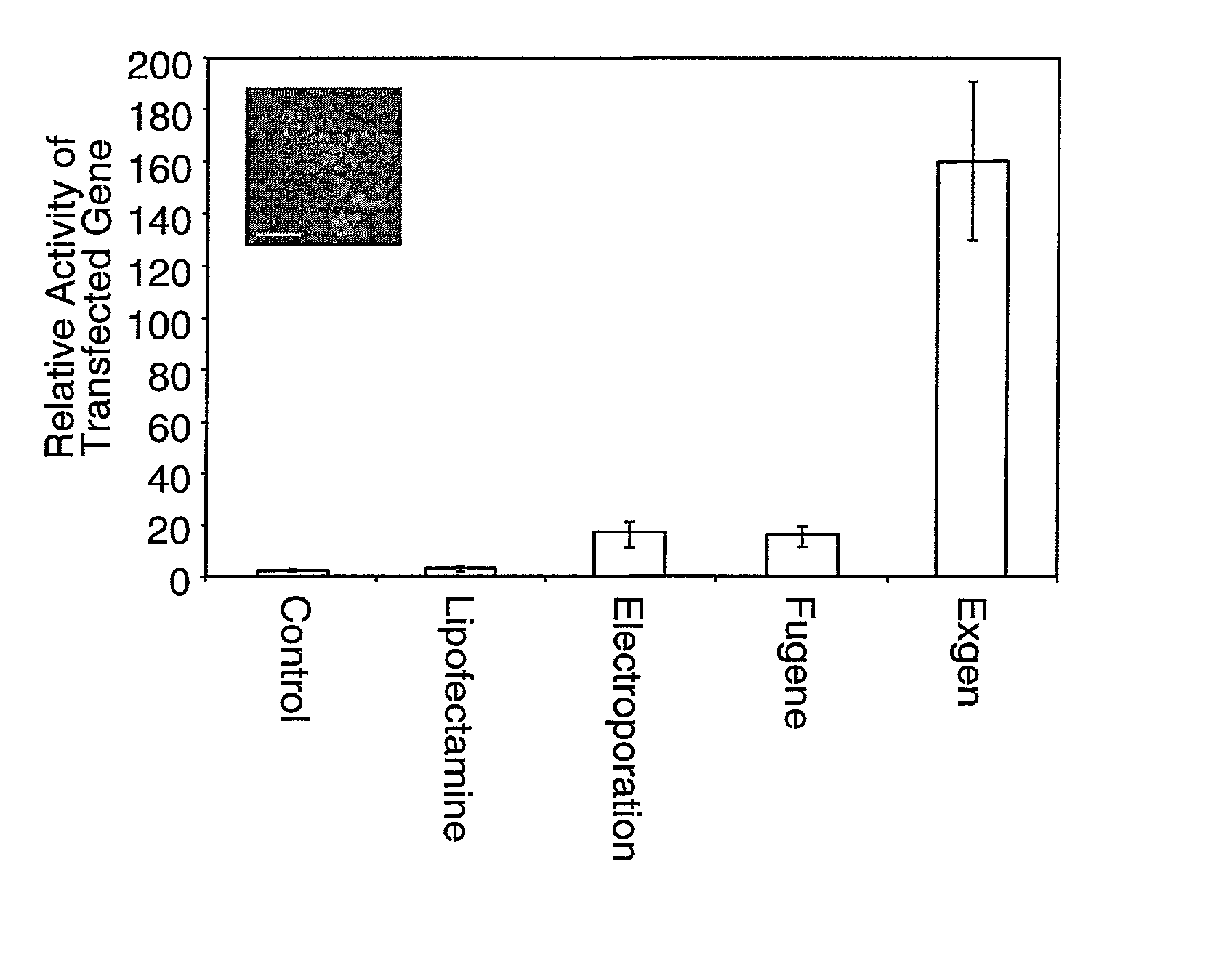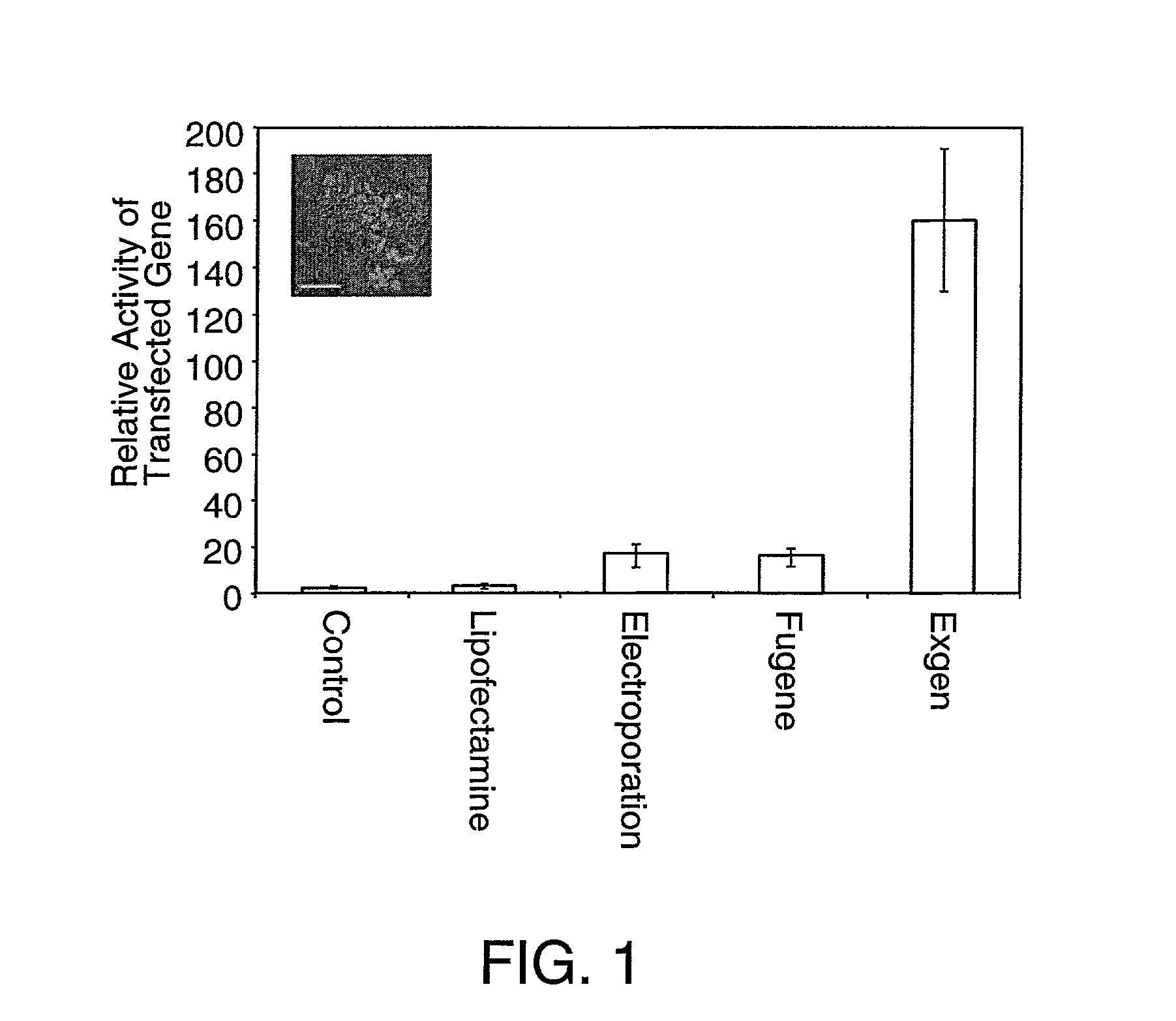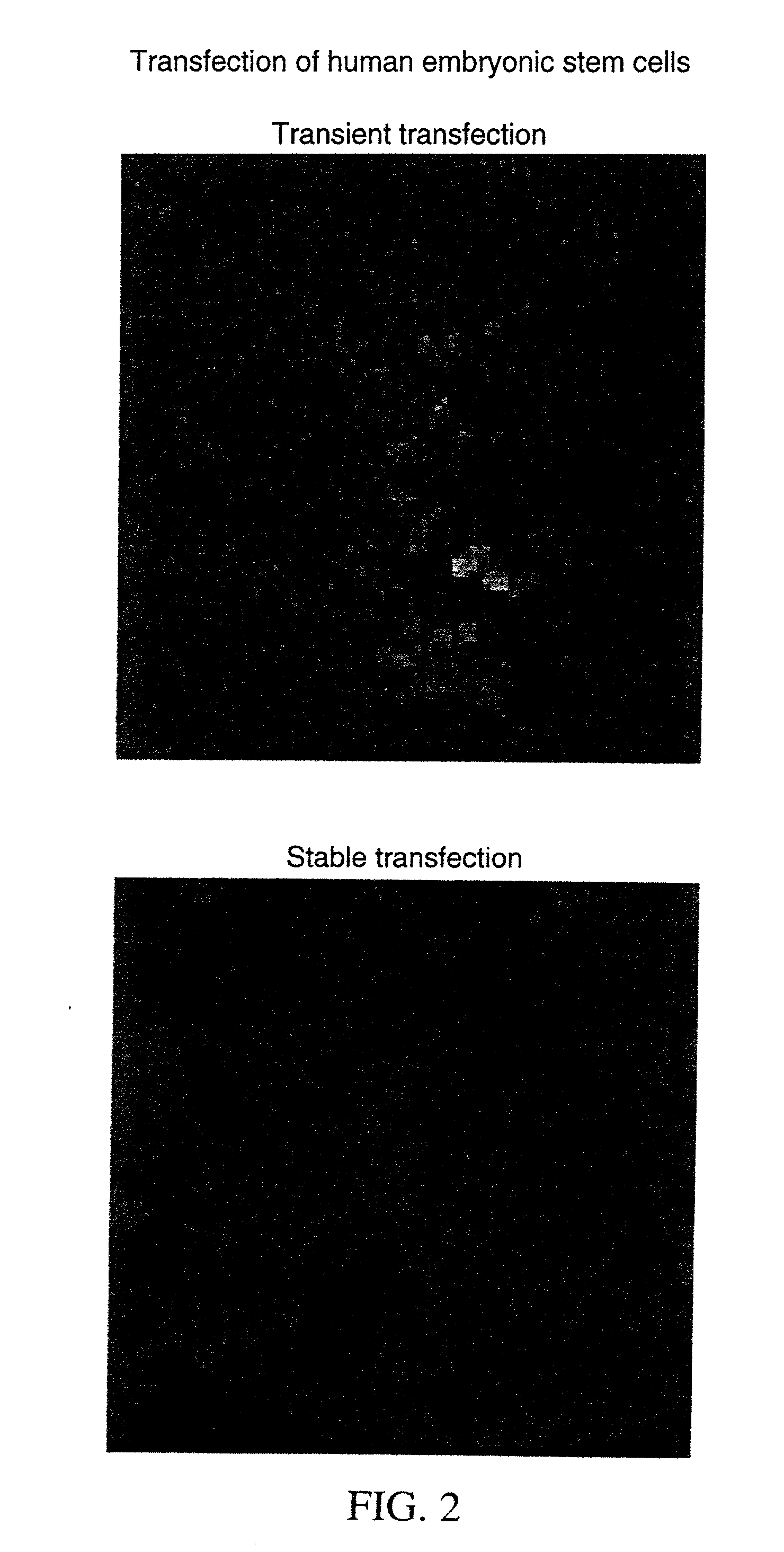Transfection of human embryonic stem cells
a technology stem cells, which is applied in the field of transfection of human embryonic stem cells, can solve the problems of residual proliferation of cells and serious adverse reactions
- Summary
- Abstract
- Description
- Claims
- Application Information
AI Technical Summary
Benefits of technology
Problems solved by technology
Method used
Image
Examples
example 1
Protocol for Transfection of Human Embryonic Stem Cells
[0062] DNA was introduced into human embryonic stem cells using electroporation, or transfection with Lipofectamine plus (Invitrogen Life Technologies, Gruningen, The Netherlands), with FuGENE (BoehringerMannheim Manheim, Germany) and with ExGen (Fermentas, Hanover, Md.). An example protocol is provided on page 25.
[0063] Cell Culture: Human ES cells were grown on a feeder layer of mouse embryonic fibroblasts (MEF) and then transferred to gelatin coated plates and cultured further to reduce the number of murine cells in the culture. Differentiation into embryoid bodies (EBs) was initiated by transfer to petri dishes, where the embryoid bodies remained in suspension. (Schuldiner 2000) differentiated embryonic (DE) cells were formed by dissociating the EBs after 5 days and culturing them as a monolayer.
[0064] More specifically, human ES cells were obtained as described in Thomson et al., (1998) Science Vol. 286, pp. 1145-1147. Clea...
example 2
Transfection with DNA for Directed Differentiation
[0072] Transcription factors that regulate differentiation of specific cells (master genes) are transfected into human embryonic stem cells according to the method described in Example 1. The expression of the transfected master gene should allow further differentiation of human ES cells in a regulated manner with a predetermined outcome.
example 3
Transfection of Embryonic Stem Cells with DNA Encoding a Cell Specific Marker
[0073] Embryonic stem cells were transfected with a DNA encoding a cell specific marker linked to marker genes according to Example 1. Cells expressing the marker can be monitored in culture, and selected for or sorted by fluorescent activated cell sorting (FACS) to provide a purified preparation of a particular type of cell. Such a system allows analysis of cells such as neuronal cells (when using a neuronal specific enhancer such as the enhancer for neurofilament light chain gene); heart muscle cells (when using a cardiomyocyte specific enhancer such as the enhancer for alpha cardiac actin gene); liver cells (when using a hepatocyte specific enhancer such as the enhancer for albumin gene); or pancreatic cell (when using a pancreatic islet specific enhancer such as the enhancer for the insulin gene).
PUM
| Property | Measurement | Unit |
|---|---|---|
| temperature | aaaaa | aaaaa |
| antibiotic resistance | aaaaa | aaaaa |
| fluorescent | aaaaa | aaaaa |
Abstract
Description
Claims
Application Information
 Login to View More
Login to View More - R&D
- Intellectual Property
- Life Sciences
- Materials
- Tech Scout
- Unparalleled Data Quality
- Higher Quality Content
- 60% Fewer Hallucinations
Browse by: Latest US Patents, China's latest patents, Technical Efficacy Thesaurus, Application Domain, Technology Topic, Popular Technical Reports.
© 2025 PatSnap. All rights reserved.Legal|Privacy policy|Modern Slavery Act Transparency Statement|Sitemap|About US| Contact US: help@patsnap.com



